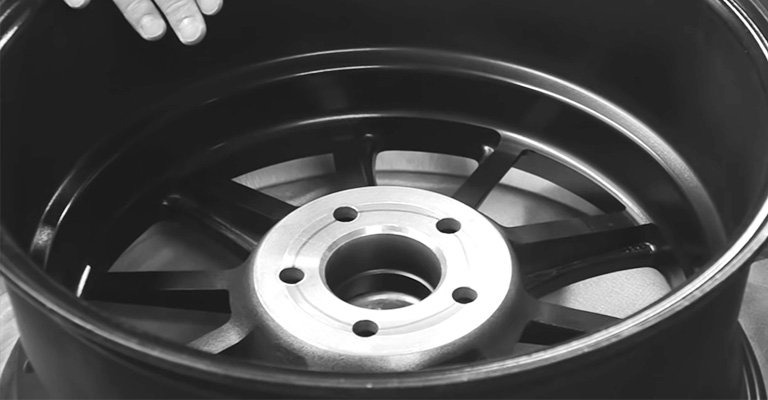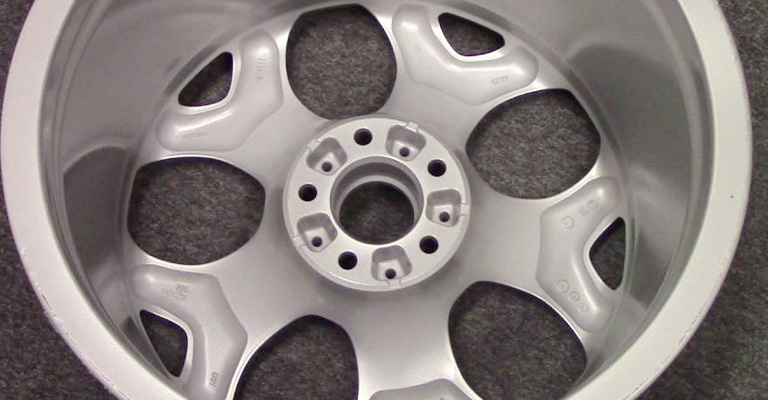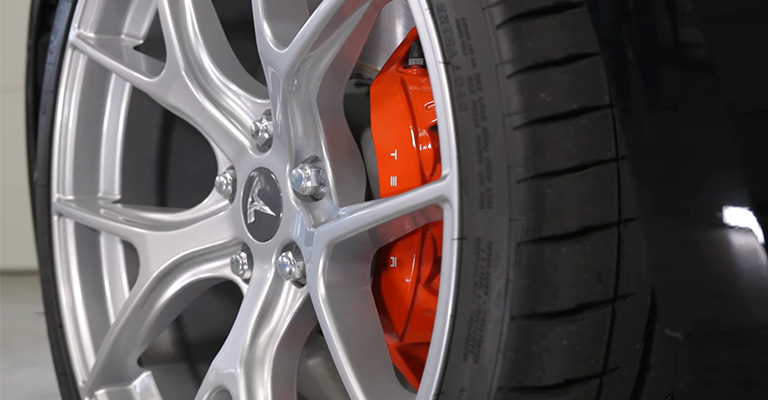Bolt pattern refers to the arrangement and number of bolts used to secure a wheel to a vehicle. It is an essential aspect of choosing the right set of wheels for a vehicle as it determines the compatibility of the wheels with the vehicle.
Understanding the bolt pattern of a vehicle is crucial when selecting wheels for it. An incorrect bolt pattern can result in improper fitment, and can cause safety concerns while driving.
Knowing the bolt pattern of a vehicle also helps in selecting the right set of wheels for improved performance and style. Hence, it is important to understand the bolt pattern of a vehicle before purchasing new wheels.

Understanding Bolt Pattern
Explanation of Bolt Pattern
The bolt pattern of a wheel refers to the number of bolts used to secure it to the vehicle and the arrangement of these bolts. It is specified by two measurements – the number of bolts and the bolt circle diameter (BCD).
The bolt circle diameter is the diameter of an imaginary circle that passes through the center of each bolt.
The number of bolts determines the number of points at which the wheel is attached to the vehicle, while the bolt circle diameter specifies the distance between the centers of two adjacent bolts.
The combination of these two measurements provides the unique bolt pattern for each vehicle make and model. For example, a common bolt pattern for a passenger car is 5×114.3, which means it has 5 bolts and the BCD is 114.3 millimeters.
Knowing the bolt pattern of a vehicle is essential for selecting the right set of wheels, as wheels with different bolt patterns cannot be installed on a vehicle without modification.
It is also important to note that some vehicles may have different bolt patterns for the front and rear wheels, so it is essential to check both the front and rear bolt patterns before purchasing new wheels.
Types of Bolt Patterns

- Four-Lug Bolt Pattern: This is the simplest and most basic bolt pattern and is found on smaller vehicles such as compact cars and some older models. The four-lug bolt pattern has four bolts arranged in a square or rectangular pattern.
- Five-Lug Bolt Pattern: This bolt pattern is more common in many passenger cars and light trucks. It has five bolts arranged in a star pattern.
- Six-Lug Bolt Pattern: This bolt pattern is used on larger vehicles such as SUVs and trucks and provides increased stability compared to the four and five-lug bolt patterns. The six-lug bolt pattern has six bolts arranged in a star pattern.
- Eight-Lug Bolt Pattern: This bolt pattern is used on heavy-duty trucks and commercial vehicles and provides the highest level of stability and support. The eight-lug bolt pattern has eight bolts arranged in a star pattern.
Measuring Bolt Pattern
Measuring the bolt pattern of a vehicle is essential for determining the compatibility of wheels. To measure the bolt pattern, the following steps should be followed:
- Remove a wheel from the vehicle to access the bolts.
- Measure the distance between the centers of two adjacent bolts. This measurement is known as the bolt circle diameter (BCD).
- Count the number of bolts used to secure the wheel to the vehicle.
- Record the measurements and bolt count to determine the bolt pattern.
It is important to note that the bolt pattern should be measured with precision to ensure accurate results.
Some manufacturers provide the bolt pattern information for their vehicles in the owner’s manual or on the vehicle’s specification sheet. In such cases, it is recommended to verify the information by measuring the bolt pattern.
Factors to Consider When Choosing a Bolt Pattern
Vehicle Compatibility

The first and foremost factor to consider when choosing a bolt pattern is the compatibility of the wheels with the vehicle. It is important to ensure that the bolt pattern of the wheels matches the bolt pattern of the vehicle to prevent any issues with fitment.
Some vehicles may have different bolt patterns for the front and rear wheels, so it is important to check both the front and rear bolt patterns before purchasing new wheels.
Wheel Compatibility
The compatibility of the wheels with the vehicle also depends on the size of the wheels and the offset. The size of the wheels should match the specifications of the vehicle to ensure proper fitment, and the offset should be appropriate to prevent any issues with the suspension and steering.
Performance Requirements

The choice of bolt pattern also depends on the performance requirements of the vehicle. A vehicle used for off-roading or high-performance driving may require a different bolt pattern compared to a vehicle used for daily commuting.
A bolt pattern with a higher number of bolts provides increased stability and support, which is important for high-performance driving and off-roading. On the other hand, a bolt pattern with a lower number of bolts may be more suitable for daily commuting as it is easier to install and maintain.
The choice of bolt pattern should be based on a combination of vehicle compatibility, wheel compatibility, and performance requirements. It is important to take the time to research and understand the bolt pattern of a vehicle before selecting new wheels to ensure a proper fit and safe driving experience.
Common Bolt Pattern Conversions
Four-lug to Five-lug Conversion

The four-lug to five-lug conversion involves changing the bolt pattern from a four-lug to a five-lug pattern. This conversion is typically performed to improve the stability and performance of a vehicle.
The conversion requires the installation of new brake components and wheels with a five-lug bolt pattern, and may also require modifications to the suspension and steering components.
It is important to consult a professional mechanic before performing a bolt pattern conversion to ensure a safe and proper installation.
Five-lug to Six-lug Conversion
The five-lug to six-lug conversion involves changing the bolt pattern from a five-lug to a six-lug pattern. This conversion is typically performed on larger vehicles such as SUVs and trucks to improve stability and support.
The conversion requires the installation of new wheels with a six-lug bolt pattern and may also require modifications to the brake and suspension components. It is important to consult a professional mechanic before performing a bolt pattern conversion to ensure a safe and proper installation.
Six-lug to Eight-lug Conversion
The six-lug to eight-lug conversion involves changing the bolt pattern from a six-lug to an eight-lug pattern. This conversion is typically performed on heavy-duty trucks and commercial vehicles to improve stability and support.
The conversion requires the installation of new wheels with an eight-lug bolt pattern and may also require modifications to the brake and suspension components. It is important to consult a professional mechanic before performing a bolt pattern conversion to ensure a safe and proper installation.
Bolt pattern conversions can improve the stability and performance of a vehicle. Still, it is important to consider the compatibility of the components and the safety implications before performing a conversion.
It is recommended to consult a professional mechanic for advice and assistance with bolt pattern conversions.
Popular Bolt Patterns for Honda Cars
- 4×100: This bolt pattern is commonly found on Honda Civics, Del Sols, and Integras.
- 4×114.3: This bolt pattern is commonly found on Honda Accords, Preludes, and S2000s.
- 5×114.3: This bolt pattern is commonly found on Honda Odysseys, Pilots, and Ridgelines.
It is important to note that while these are popular bolt patterns for Honda cars, not all Honda vehicles will have these bolt patterns. It is always best to check the specific bolt pattern for the make and model of the Honda vehicle in question.
There are bolt pattern differences between Integra and Prelude, and there are some other differences too, for detail read Honda Prelude vs Integra cars.
Faqs
A 5×114.3 bolt pattern refers to a wheel that has 5 bolts spaced 114.3 millimeters apart in a circular pattern. This bolt pattern is commonly found on Honda Odysseys, Pilots, and Ridgelines, among other vehicles.
No, wheels with a 5×114.3 bolt pattern cannot be installed on a vehicle with a different bolt pattern without modification. It is important to ensure that the bolt pattern of the wheels matches the bolt pattern of the vehicle to prevent any issues with fitment.
Yes, 5×114.3 is a common bolt pattern that is found on many Honda and other vehicles. It is important to check the specific bolt pattern for the make and model of the vehicle in question before purchasing new wheels.
Yes, bolt pattern conversions are possible, but they require modifications to the vehicle and may compromise the safety of the vehicle. It is recommended to consult a professional mechanic for advice and assistance with bolt pattern conversions.
No, wheels with a 5×114.3 bolt pattern cannot be installed on a vehicle with a 4×100 bolt pattern without modification. It is important to ensure that the bolt pattern of the wheels matches the bolt pattern of the vehicle to prevent any issues with fitment.
Conclusion
Proper bolt pattern selection is essential for ensuring a safe and reliable driving experience. The bolt pattern determines the compatibility of the wheels with the vehicle and affects the performance and stability of the vehicle.
An incorrect bolt pattern can result in issues with fitment, suspension, and steering, which can compromise the safety of the vehicle.
Hence, it is important to understand the bolt pattern of a vehicle and select the right set of wheels with a matching bolt pattern.

Leave a Reply